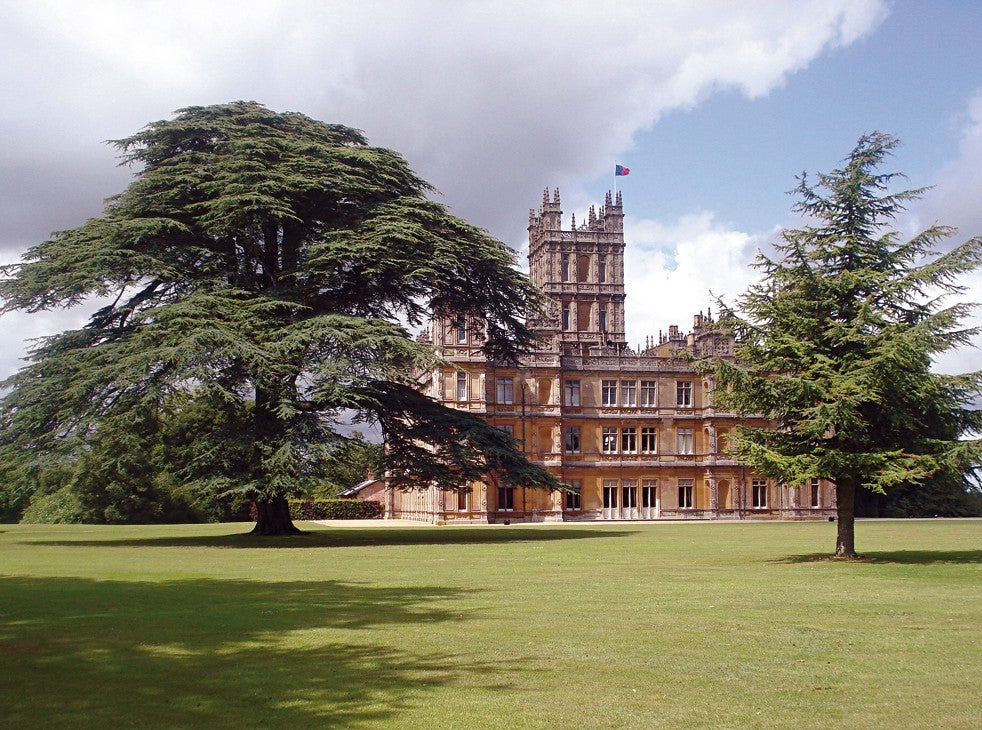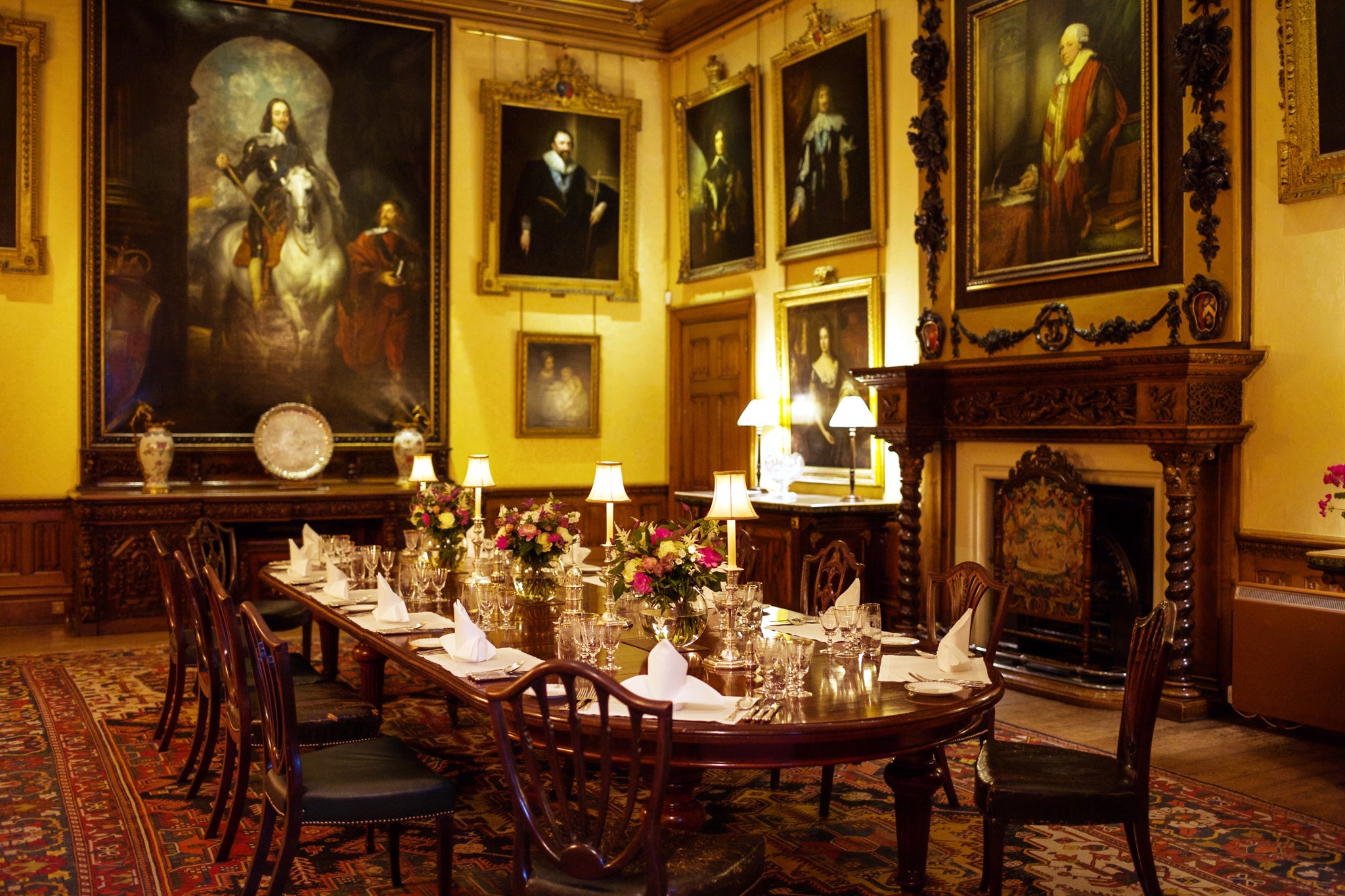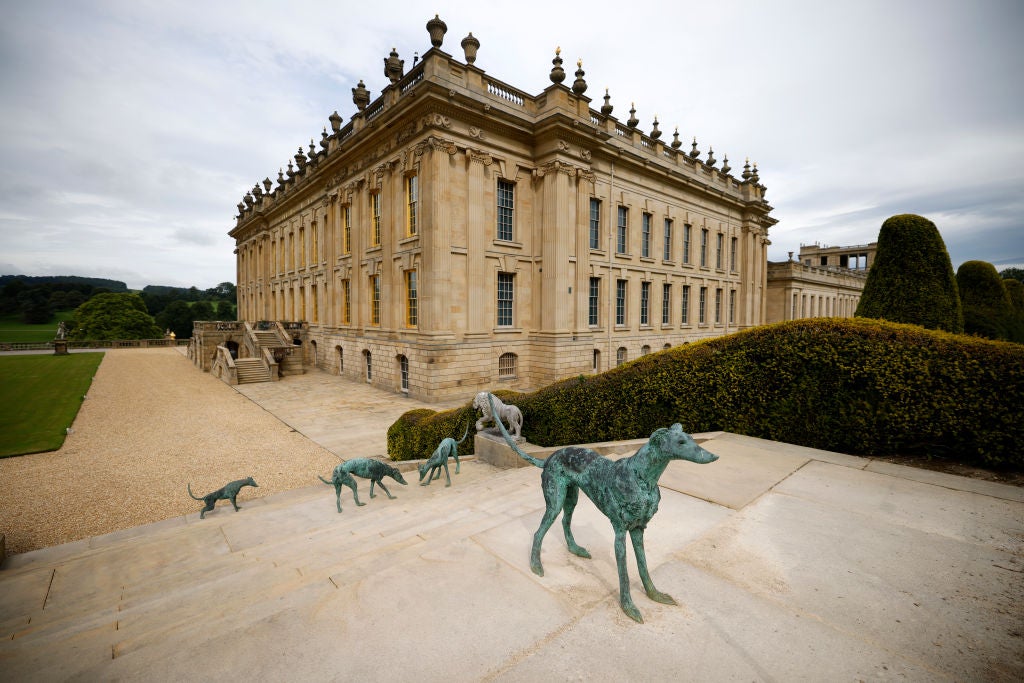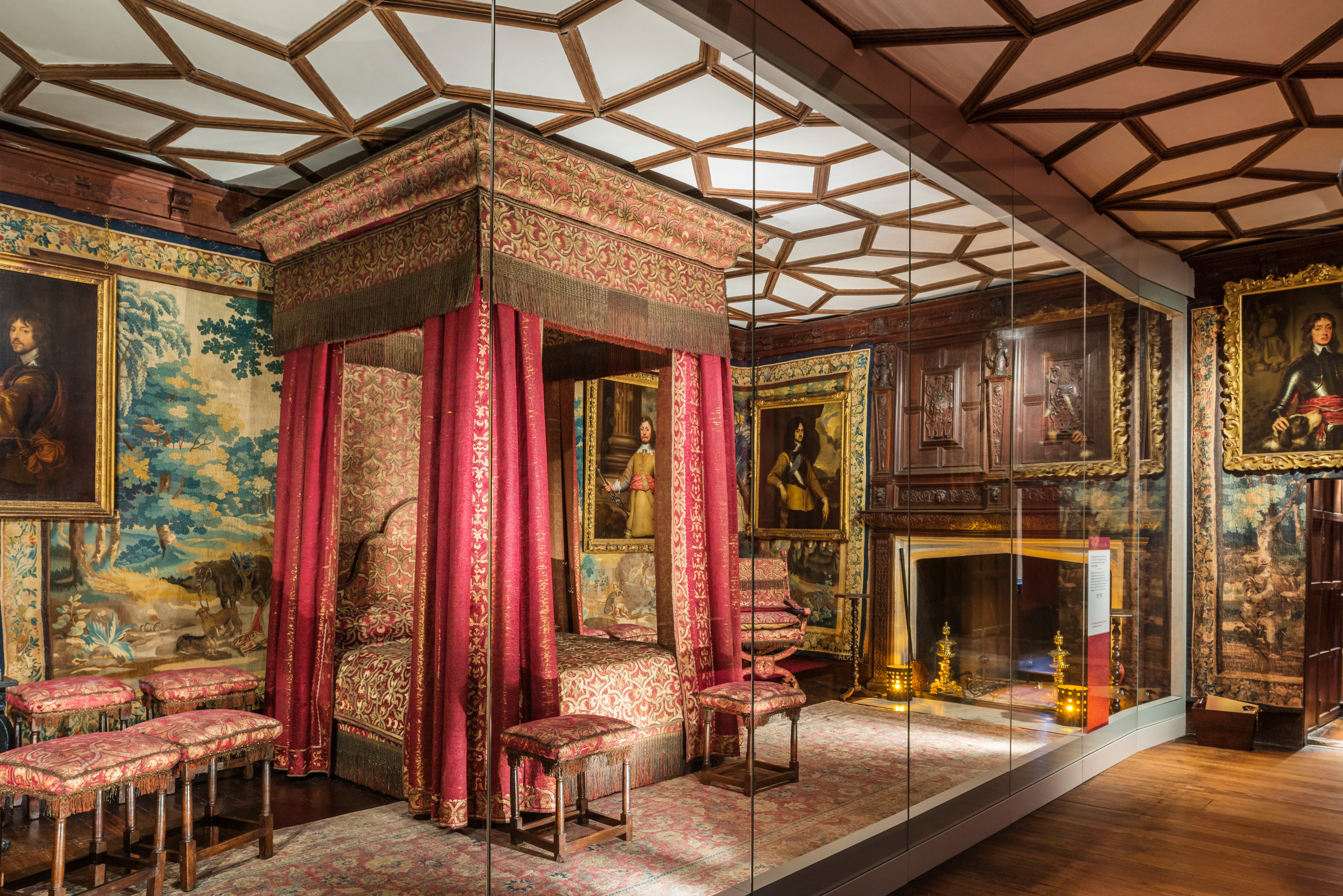Pretend you’re in Downton Abbey: Three stately homes just a quick ride from London
As the popularity of the period drama grew, so did interest in stately homes. Here are three – including Downton itself – that are a short while away from London, writes Nancy Nathan

Your support helps us to tell the story
From reproductive rights to climate change to Big Tech, The Independent is on the ground when the story is developing. Whether it's investigating the financials of Elon Musk's pro-Trump PAC or producing our latest documentary, 'The A Word', which shines a light on the American women fighting for reproductive rights, we know how important it is to parse out the facts from the messaging.
At such a critical moment in US history, we need reporters on the ground. Your donation allows us to keep sending journalists to speak to both sides of the story.
The Independent is trusted by Americans across the entire political spectrum. And unlike many other quality news outlets, we choose not to lock Americans out of our reporting and analysis with paywalls. We believe quality journalism should be available to everyone, paid for by those who can afford it.
Your support makes all the difference.Lady Mary Crawley famously rescued the family home, Downton Abbey, by marrying Matthew Crawley, a distant cousin and heir to the sprawling estate. It’s no coincidence that the hugely popular television series is named after the house: Downton Abbey is filled with cliffhangers centered on the family’s manoeuvring to keep the cash-strapped property afloat. The show that made Britain’s stately homes so familiar to millions of American viewers also demonstrated how difficult it was – and remains – to finance them.
It’s been estimated that one in six English stately homes were demolished in the 20th century, particularly after the Second World War, with steep inheritance taxes and fewer people working “downstairs” to keep massive houses humming. Now, tourism is the ticket. At many stately homes, trusts allow aristocratic owners to live in private parts of their castles while tours and other public events defray the cost of upkeep. Recently, I travelled by train from London to three standouts. The experience of walking through each of the houses and touring their grounds felt surprisingly authentic; the accumulated treasures that these ducal families have inherited are more powerful in situ than they would be behind glass in a museum.
The real Downton, Highclere Castle, about 60 miles from London, has itself teetered on the edge of ruin a few times since 1679. When filming of the series started in 2010, it brought welcome revenue to its owner, the Earl of Carnarvon. Today, tens of thousands of annual visitors still pay to tour the rooms and grounds that appeared in the show.
On a sunny September afternoon, I took the 40-minute train ride to Highclere from London. From the moment I walked through the gates, past the low-hanging limb of a 200-year-old cedar that frames the first sight of the castle, the approach that every devoted Downton fan knows so well, I felt as though I was in a film set.
I remembered the massive three-story oak stairway that leads right into the towering reception saloon, bordered by Gothic stone arches and walls covered with 17th-century embossed Spanish leather; the long library where Lord Grantham’s desk sits and where many a Crawley family conversation took place on the red sofas by the fireplace; and the dark-panelled dining room where the Dowager Countess of Grantham famously asked, “What is a ‘weekend’?” under tiers of huge ancestral portraits.
The upper classes weren’t especially circumspect about their sex lives. During the same period, while the British were losing their American colonies, there was an equally notorious affair at Chatsworth
The Earl of Carnarvon sets a scene for paying visitors with easels bearing photos of the film crews at work shooting the series. And on the tables and walls, his own family photos and framed news articles. I was especially interested in ones of his father, the 7th earl, known as “Porchey”, short for his honorific title, Lord Porchester. He was the racing manager for Queen Elizabeth’s horses and a very close friend, perhaps even a platonic love interest, as hinted in the Netflix series The Crown.
Highclere hosts busloads of tourists. Although touring guru Rick Steves has confessed that house tours such as these put him into a “furniture-wax coma”, I didn’t notice a significant gender imbalance among the visitors. I also saw mostly couples a few days later, when I took a train north of London to one of the stateliest of stately homes and the most history-rich of the three I visited: Chatsworth House, seat of the Cavendish family, the Dukes of Devonshire, since the mid-16th century.
Chatsworth is nestled among grazing lands dotted with sheep, the narrow River Derwent snaking in front of its enormous expanse of yellow stone, with stables on one end and long terraces on the other. It is that panorama that some compare with Jane Austen’s description of the fictional Pemberley, home of Mr Darcy in Pride and Prejudice. (The 2005 film adaptation used Chatsworth as a location.)
As visitors approach, the grandeur of the place emerges: the gold leaf applied around the outside of the very tall windows and the seemingly countless classical statues that punctuate the terraces. Off on a distant hill is the famous Cascade, completed in 1696 and subsequently enlarged, its wide stone steps carrying sheets of water down about 200 feet. The side of the house has its own approach, as impressive as the front view seen from the twisting road. To see this most iconic view of Chatsworth, walk to the far end of the reflecting canal completed in 1703. The 1st duke, who had it built, thought a canal would attract the new Dutch-born British king, William of Orange, who never visited. The Emperor Fountain, a shooting stream of water propelled almost 300 feet straight up, is visible in the distance. An imitation of one at Peterhof in St Petersburg, it was installed in 1844 by the 6th duke to impress Russian Czar Nicholas, who also never arrived. He missed an incredible sight.

On the sunny day I toured, visitors were making the most of its acres of gardens. The huge rock garden from 1842 is made from enormous boulders arranged almost as if after a landslide, giant redwoods mingling among the stones. The supersize boxwood maze and perennial garden are all within the extensive stone foundations that remain from Chatsworth’s famous glass conservatory, the inspiration for London’s Crystal Palace of 1851. Contemporary sculpture, a passion of the current duke and his father, seems to appear around every corner.
Inside Chatsworth House, visitors see public rooms mostly built during the time of the 1st duke. The stately three-story entry hall, for example, painted in brilliant colours on every side and overhead with scenes from the life of Julius Caesar, has a wide staircase to the first floor.
Visitors walk through grand rooms designed for state visitors of the 18th century. These are the same rooms that set the stage for the legendary Chatsworth house parties of the 19th century. The country’s leading political figures and aristocrats, often including the Prince of Wales (the future King Edward VII), would spend their days shooting and their nights “with easy access” to other visitors of the opposite sex, according to the PBS documentary Secrets of Chatsworth.

Like Highclere, Chatsworth was constantly under financial threat. In 1950, a crisis: the 10th duke died suddenly at age 55, and death duties of 80 per cent unexpectedly came due. Many of the most important Old Master paintings bought by the 6th duke were given to the UK Treasury in lieu of cash, and thousands of acres were sold. The Chatsworth House Trust now operates the estate. Under the 11th duke and duchess, the former Deborah Mitford (one of the eccentric Mitford sisters), tourists began coming in 1981. In the year before the pandemic, the house welcomed more than half a million visitors.
A few days later, I took a 25-minute train trip south of London to another historic stately home, Knole – all 365 rooms of it. It was built for an archbishop of Canterbury in the mid-15th century and bought by Thomas Sackville in 1603. It was that first Sackville, ancestor of the current residents of Knole, who modelled the house on palaces he had seen in Europe, transforming it into a residence fit for entertaining the royal court.
Almost the first thing a visitor sees in the entrance hall at Knole is a life-size sculpture of a reclining nude, a famous Italian ballerina known as La Baccelli. She lived on the estate for years and had a son with the 3rd Duke of Dorset, the title given the Sackvilles. After setting a torrid pace with affairs in London and Paris, where he was said to be a favourite of Marie Antoinette, that 3rd duke settled down at Knole with an aristocratic wife, Arabella Cope. The sculpture of La Baccelli went to the attic, but survived.
The upper classes weren’t especially circumspect about their sex lives. During the same period, while the British were losing their American colonies, there was an equally notorious affair at Chatsworth. There, the 5th Duke of Devonshire and his wife, Georgiana Spencer, an ancestor of Princess Diana, lived with her best friend, Elizabeth Foster, in a long-running menage a trois.

The Sackville family assembled the country’s greatest collection of royal furniture from the Stuart period. It’s still there, cared for by the National Trust, which recently completed a multi-year restoration of Knole. The furnishings were brought there by Charles Sackville, who, as lord chamberlain to the king’s household under William III and Mary, had the authority to remove furniture from royal properties such as Hampton Court, Whitehall and Kensington palaces. There are three ceiling-height, canopied state beds, including that of King James II and, remarkably, original, elaborate bed hangings and spreads, as well as upholstered chairs and stools from the palace bedroom sets. One of the rooms includes tables completely coated in embossed silver. I’ve seen royal bedrooms in palaces including Versailles and Windsor Castle, and the state beds at Knole are the most lavish.
I was fascinated by the black andirons bearing the initials of Henry VIII and Anne Boleyn, now in Knole’s medieval Great Hall. And in one of the state rooms, the National Trust has the original Knole sofa, upholstered in crimson velvet, enclosed in a protective clear case. The sofa is the model for modern sofas with high arms the same height as the back, marketed as Knole sofas or settees today. It’s the size of a modern love seat, because it was used as a joint throne for monarch and consort.
Vita Sackville-West, author and lover of novelist Virginia Woolf, grew up at Knole and lived there with Woolf in the 1920s. She devoutly wished to keep Knole, as the only child of Lord Sackville. But when he died in 1928, there was no Matthew Crawley to save the day. She moved out – and her uncle moved in.
© The Washington Post



Join our commenting forum
Join thought-provoking conversations, follow other Independent readers and see their replies
Comments